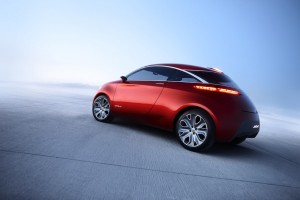Hoping to catch up after a late start in what is now the world’s largest automotive market, Ford Motor Co. plans to invest $760 million to build a new assembly plant in China.
The new facility will boost the maker’s total capacity in China to 1.2 million vehicles a year and bring its total investment in the world’s most populous nation to $4.9 billion. Even so, it will leave Ford significantly short if its eventual goal is to catch up to Detroit rival General Motors – which last year set an all-time sales record of 2.5 million vehicles in China.
“So far, Ford’s investments in China and across Asia represent its largest and most rapid global expansion in fifty years,” said Joe Hinrichs, the maker’s president of Asia, Pacific and African operations.
“This expansion will help us realize an increase in global sales by about 50 percent from 2010 to about 8 million vehicles annually by mid-decade,” he added. “Building this plant helps lay the foundation for that growth and reconfirms our commitment to China, which is expected to have sales of about 30 million vehicles by 2020.”
The new plant is to be located in the city of Hangzhou and will have a capacity of 600,000 vehicles annually when it opens in 2015. It will be part of an existing joint venture called Changan Ford Mazda Automobile.
As with all other foreign manufacturers operating in China, Ford has had to pair up with a local manufacturer, in this case the Changan Automobile Company, but the venture also serves as one of the last remaining ties between Ford and long-time Japanese affiliate Mazda.
The Hangzhou plant is just the latest in a series of moves by Ford to expand its previously minimal presence in China. Two weeks ago, the maker said it will invest $600 million to boost capacity at its Chongqing facilities by 350,000 vehicles.
A month before that, Ford said it would increase capacity at a second plant in Chongqing by one-third. The facility, which currently produces the new Focus, will have capacity to produce 600,000 vehicles annually after the latest investment.
The maker is backing its expansion capacity with new product, stressed Dave Schoch, chairman and CEO of Ford China, with 15 new vehicles and 20 new powertrains planned for its product portfolio by 2015.
“The Chinese auto market remains one of the most vibrant in the world,” said Schoch, but analysts would add that it is quickly becoming one of the most demanding.
While the hefty new investments by Ford might have been roundly appreciated a year ago they are triggering some questions today.
Some analysts wonder if the maker has waited too long to be able to get a serious foothold in the market. Such questions reflect the apparent slowdown in the Chinese auto market’s rapid growth – which has approached 100% annually at times over the last decade.
The luxury market, in particular, has been slowing markedly and some makers have been forced to sharply cut prices, in recent months, to maintain momentum.
Notably, Ford saw sales in China slip 14% during the first quarter of 2012, even though GM volume rose 9% during the same period.
In an interview with the Wall Street Journal, Hinrichs acknowledged the maker likely should have moved more quickly in China but now is dedicated to catching up.
Ford lost $83 million in its Asia-Pacific region last year, in large part due to its heavy investments aimed at growth in the region.

